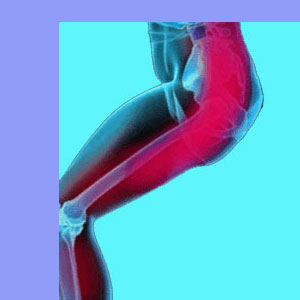
Topical medications for sciatica offer the prospect of symptomatic reduction via the use of products which act transdermally. There are both prescription and OTC versions of sciatica medications that can be applied to the skin to enact pain management. Topical pain relief products are popular and can be very effectual in some circumstances. Topical medications can also increase the effectiveness of other related therapies, including chiropractic, massage and physical therapy. However, it must be stated immediately that no form of topical medication will ever cure structurally-based sciatica. The very best case scenario entails a decrease in symptomatic activity for a very temporary duration.
This guide features important guidance for patients who are seeking sciatica pain relief using medications that are applied to the skin. If you have never tried topical medications for sciatica, this report will get you up to speed on everything that you need to know in order to enjoy the best results from home-based treatment.
What are Topical Medications?
Topical medications are pain relief products that are applied to the skin in order to work on deeper tissues. Some products contain pharmaceutical-grade drugs, while others simply contain substances that are deemed health and beauty aids and are therefore virtually immune from governmental regulation.
Prescription strength topical drugs usually contain transdermal pain agents that work locally or systemically, even though they are topically applied and not orally ingested or intravenously injected. Topical prescription drugs usually demonstrate the same degree of general risk as their oral or injectable counterparts, but do provide other specific benefits, such as not disturbing the gastrointestinal tract, for patients with sensitive digestive systems. These products might come in patch, powder or cream forms.
However, most topical products used to relieve sciatica are over-the-counter preparations that are not even considered medications. These products usually contain various substances such as herbs, oils, menthol, capsaicin and camphor. These ingredients will not permeate deeply enough to have any effect on the actual sciatic nerve, but this does not mean that they are not useful or effective. OTC creams, rubs, balms, liniments, ointments and compresses come in a diversity of strengths, formulas and brand names. They vary in efficacy, price and application. Therefore, patients might require a period of trial and error to find the best topical sciatica product to suit their specific needs and expectations.
Usage of Topical Medications for Sciatica
Topical prescription drugs will come with highly-specific information about how to utilize the product. Always adhere to these directions and contact your physician or pharmacist for any questions you may have concerning proper utilization of the drug.
OTC products will generally have some basic directions on the label, but this does not mean that the substance is limited to how it can be used. In fact, patients have written to us citing far greater efficacy from common OTC products when they are creatively applied, often in combination with other healing modalities. Helpful advice on using topical medications can often be found on consumer websites, such as Amazon, or on the product manufacturer’s social media pages, if public comments are enabled.
In most cases, topical products should be applied alone to clean, unbroken skin in the areas affected by pain. They often benefit from being rubbed in or covered with a bandage or compress. When in doubt about the best way to use a particular product, contact the manufacturer or call your doctor for advice.
Warning: Most OTC products will contain ingredients that can irritate eyes and other mucus membranes. Therefore, be sure to contain applications to painful areas and protect yourself against accidental exposure that may result in tremendous pain and possibly even cause injury.
Guidance on Topical Medications for Sciatica
We tend to shy away from recommending prescription drugs, since even in topical forms these substances demonstrate many serious risk factors, including the possibility for addiction and the very real potential to cause blood or organ damage. Therefore, our guidance centers on the use of OTC topical creams, balms and liniments.
We can not speak to each and every topical medication on the market. However, we do have extensive experience using many of these products personally and professionally. Therefore, we provide the following guidance to readers who want to benefit from our combined experience as both patients and caregivers:
Tiger balm, and similar menthol-based preparations, are great products that come in many formulas. We find these very effective for topical pain management, especially when combined with a thorough massage. Quality capsaicin creams can also work extremely well, but the massage must be performed using gloves to prevent the substance from affecting the therapist.
When using topical pain management products, the effects will not express themselves immediately. In fact, the full effectiveness of most OTC and prescription products will take 15 to 60 minutes to present themselves. Therefore, patients must not judge the efficacy of a product prematurely. Instead, they should relax and allow the substance to permeate and work over several hours. For this reason, we recommend using topical products when the patient can remain relaxed and reclined, such as before bed or before rising in the morning.
In my personal experience, I find topical medications to be excellent when paired with a loving massage from my wife. Since she has tremendous skills in this regard, the topical medications really work into the skin nicely and provide soothing relief from specific pain, as well as helping to relax me. Remember that the mental and emotional states of the patient will certainly affect the degree of pain experienced.
If you already receive massages, consult with your therapist about the addition of various topical pain relieving products. These might improve the experience exponentially. If you are already using topical pain management products, then consider adding massage to the care plan to increase the efficacy of these medications and provide better relief than they could ever muster alone.
Sciatica > Sciatica Products > Topical Medications for Sciatica





